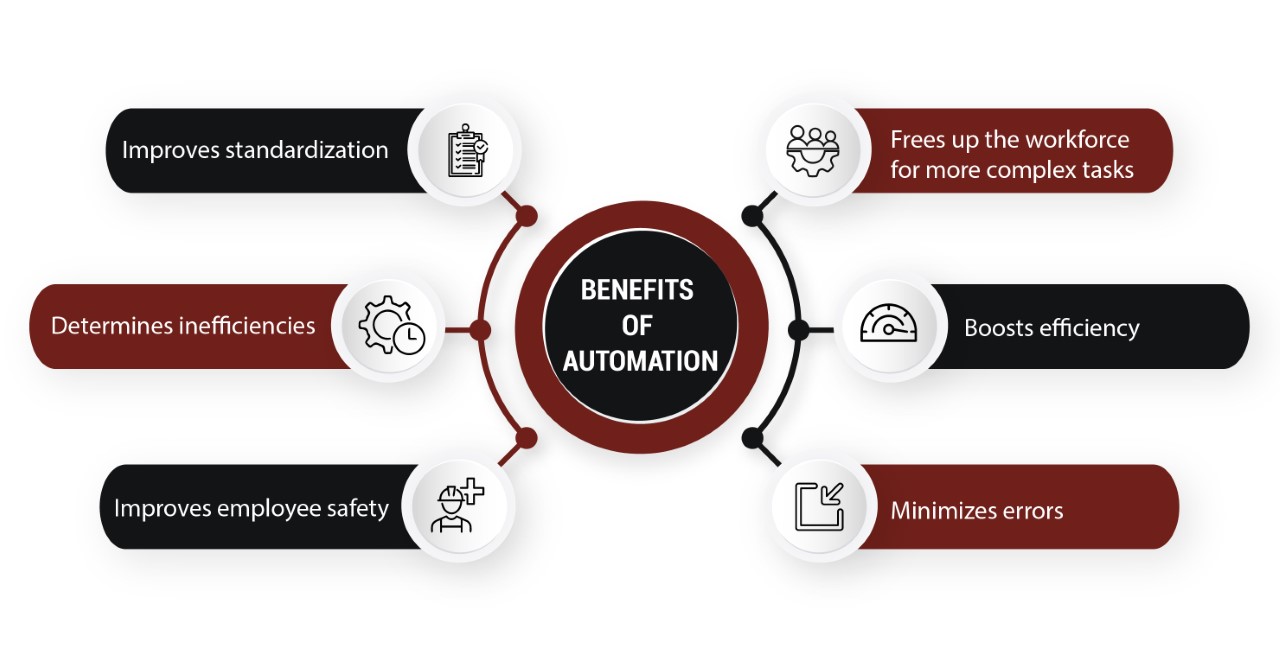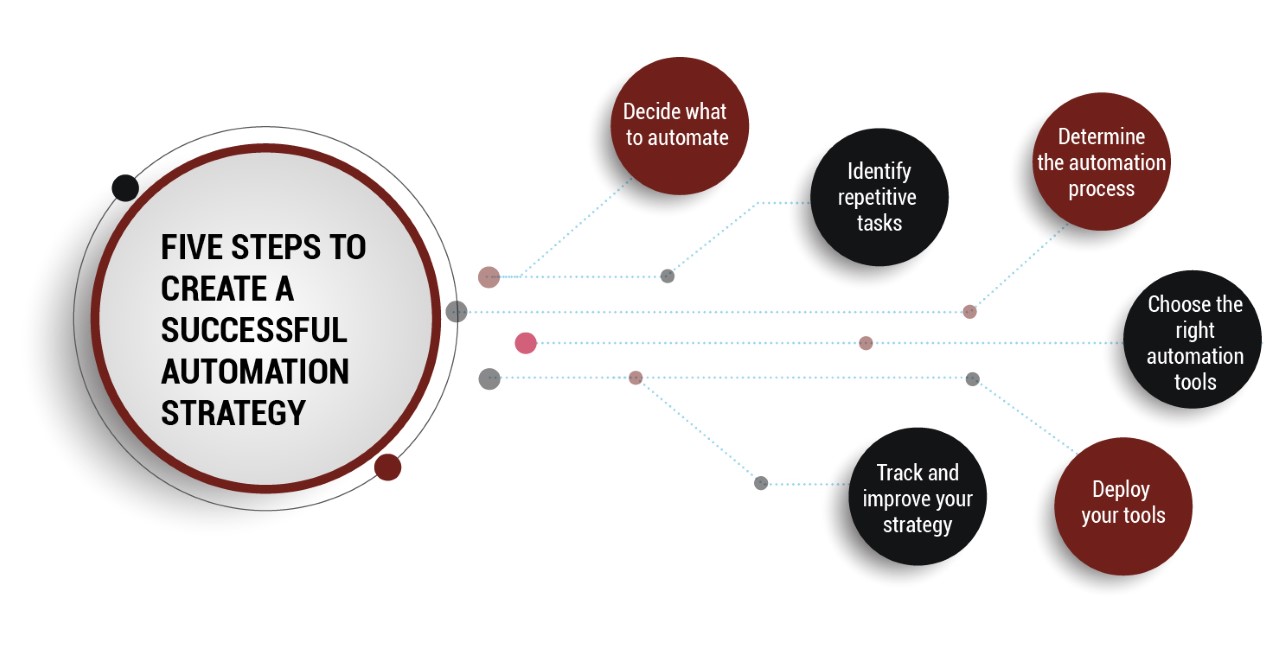When you automate an industry, you modernize it; when you automate a life you primitivize it.
- Eric Hoffer
Automation is one of the best ways to increase operational efficiency in your business. Traditionally, automation was only common in the manufacturing industry, but technology has developed to a point, that every business can take advantage of automation in more ways than one.
As many are the benefits of automation, it isn’t something that any business can just rush into without any planning. Just like other technologies, automation tech won’t do much without a well-crafted strategy behind it. To avoid wasting time and resources, it’s imperative that you first create an automation strategy.
In business, automation is the use of technology to execute mundane and repetitive tasks so the workforce can be focused on higher-value tasks that require human judgment. There are many kinds of automation across industries but they generally fall into four categories:
There are plenty of ways automation can help businesses grow and more are being developed every day. According to a survey from McKinsey, 72 percent credit making automation a strategic priority as being one of the most important factors in their companies achievements with automation.
Below are some of the primary benefits of automation.

From the effective implementation of an ERP system to the deployment of a virtual assistant, any form of automation in a business needs to be backed by an automation strategy. Understanding this, you can follow five steps to create a successful automation strategy.

Not everything should be automated in your business. Some processes still need to be done by humans. Moreover, some processes aren’t worth automating. Take a closer look at your business processes and determine which ones can greatly benefit from automation. These may include accounts payable automation, customer service, and inventory management.
The bulk of the efficiency boost your business will get from automation is from the elimination of repetitive tasks. In this step, you need to analyze the roles of each department to identify redundancies. The best way to do this is by getting first-hand experience with business processes and interviewing employees.
Leaders should put themselves in the shoes of their constituents so they can experience the hassle of dealing with repetitive tasks. This gives them a closer look at the problem and other areas that may have deficiencies. Furthermore, they should also spend time querying employees about their own observations and asking for their suggestions.
After deciding which areas you will automate and revealing the repetitive tasks to address, it’s time to decide how the automation will work. This is where you start looking into automation tools and determining what you want these tools to accomplish. Reimagine the workflow process and ask yourself “What’s the best workflow for your automation goals?” You can map your present workflow to get a better look and begin noting the changes that you want to implement.
In Step 3, you were only considering what automation tools you require, but now you need to make a decision. The best automation tools for your business depend on what functional areas you have decided to automate and your automation goals. Some tools are perfect for small businesses and others are more suited for larger enterprises, so business size is an important consideration.
Choosing the right automation tools involves an entirely separate set of steps, but some important factors to consider are scalability, programmability, and ease of integration.
With automation tools selected, it’s time to plan their implementation. To successfully roll out your automation tools, you should consider the following:
After you’ve deployed your automation tools, you should monitor its performance. No matter how much time you’ve spent planning, there are bound to be problems right on the first day of deployment. Your priority at this point should be to track how well the system is working, fix problems, note down issues, and use what you learn to improve the strategy. This is a never-ending process that you need to perform diligently if you want your strategy to remain effective and successful.
Automation is necessary for businesses that seek to survive and grow in today’s digitalized economy. However, it’s important to have a good automation strategy before making the jump. Failure to do so can result in big financial losses and wasted opportunities.

CredBadge™ is a proprietary, secure, digital badging platform that provides for seamless authentication and verification of credentials across digital media worldwide.
CredBadge™ powered credentials ensure that professionals can showcase and verify their qualifications and credentials across all digital platforms, and at any time, across the planet.

Keep yourself informed on the latest updates and information about business strategy by subscribing to our newsletter.